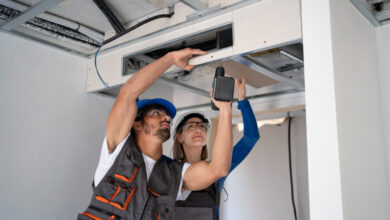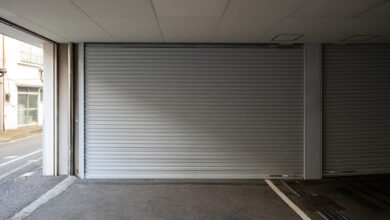Making your home more accessible

There is no place like home; a home is where we should be at ease. Therefore, when it becomes more challenging to get around, we need to make changes to increase the accessibility of our space. While we can bring in a contractor who can make wholesale changes to the house, there are more minor adaptations you can make yourself to ensure you can quickly get around.
Here we offer some ways to make your home more accessible, which you can do yourself. They are designed to be practical and straightforward and not to address more complex needs.
Wooden floors and no rugs
Laying wooden floors is one of the easiest ways to make rooms in your home accessible. If relying on a frame or a wheelchair, it will be easier to manoeuvre this around on a smooth surface. While it would then be tempting to lay rugs to add some warmth, these become a hazard and can reduce the accessibility of your home. Indeed, one of the first things you are likely to do is lift the rugs and store them away.
Move furniture
Like the lifting of rugs, you may also want to cut back on the amount of furniture in your house. It is a great idea to create pathways through your home. Items such as console tables, coffee tables, and the like can be hazardous for people on crutches or in a chair.
Removing a chair from the dining table is a simple thing to do for those in a wheelchair, as you give them somewhere they can roll themselves at mealtimes.
Ramps
An elevation change is a challenge for accessibility to a home. Therefore, deploying ramps where there are steps can ease the passage through a house. These do not have to be elaborate constructions and can also be deployed temporarily and lifted away. It might be more appropriate to have someone come in and put something more permanent where the steps are many or steep. It might be that a lift is a better way to cope with stairs.
Grab rails and handles
Sometimes we can move around under our own steam, but we need extra help to steady ourselves or transfer our weight. It is a good idea to place additional bars and handles in critical places, such as the bathroom and toilet. Adding another banister rail on the stairs could also offer more stability. Anywhere you may find it helpful to have an aid for stability is a good place for a grab rail to be added, and it is the most straightforward DIY job to do.
Invest in a shower seat
Ideally, you would turn your bathroom into a wet room. Anybody would then be able to enter the room and shower without having to step up into a shower or bath. A simple way to adapt a shower is to add a fold-down seat, so people who cannot stand for long periods can wash independently.
If you want to continue having a bath, you can purchase one with a door that you open and shuffle into a seat. However, if you don’t want to go this far, then you can use a bath board. The bath board offers a seat for the person to sit on and swing legs around into the bath.
Putting down a bath and shower mat is a minimum for your bathroom, so people with poor balance can move around without fear of slipping.
Clear space around the bed
Access to the bed from three sides is essential for those wanting to get into bed with little fuss. Making sure that there is clear room around the bed will help those in a chair and with a frame. Grab rails near the bed are another handy option and shouldn’t just be used in the bathroom.
Lower cupboard tops and the sink
Finally, the kitchen can pose a challenge for accessibility, especially for those in a wheelchair. Lowering one of the cupboard tops and maybe even the sink is a great idea. More expensive options allow you to adjust the height of surfaces, though this would be a substantial investment.
Conclusion
These are just a few simple ways to make your home more accessible. If you want to make your home accessible for visitors, you might want to ask them what adaptations they need before you act.




